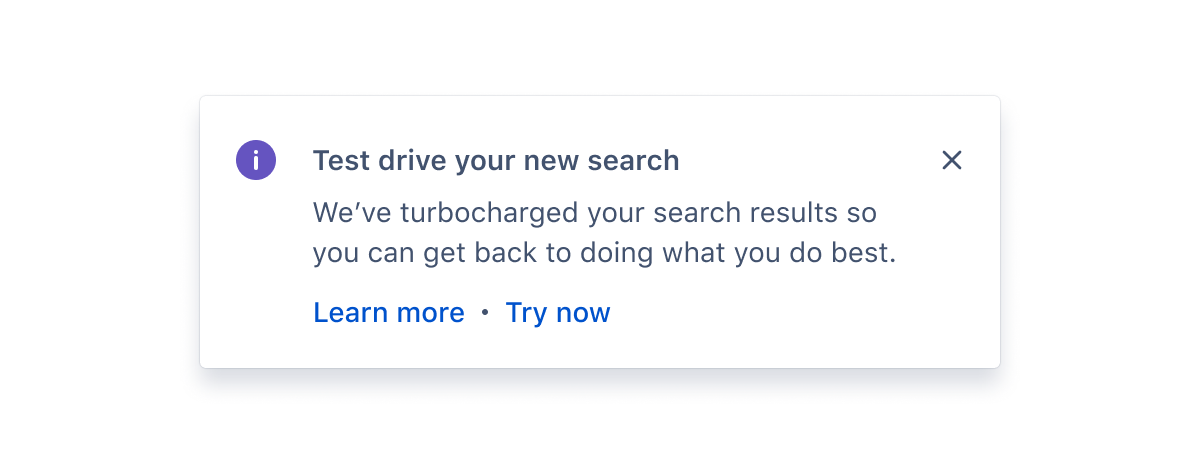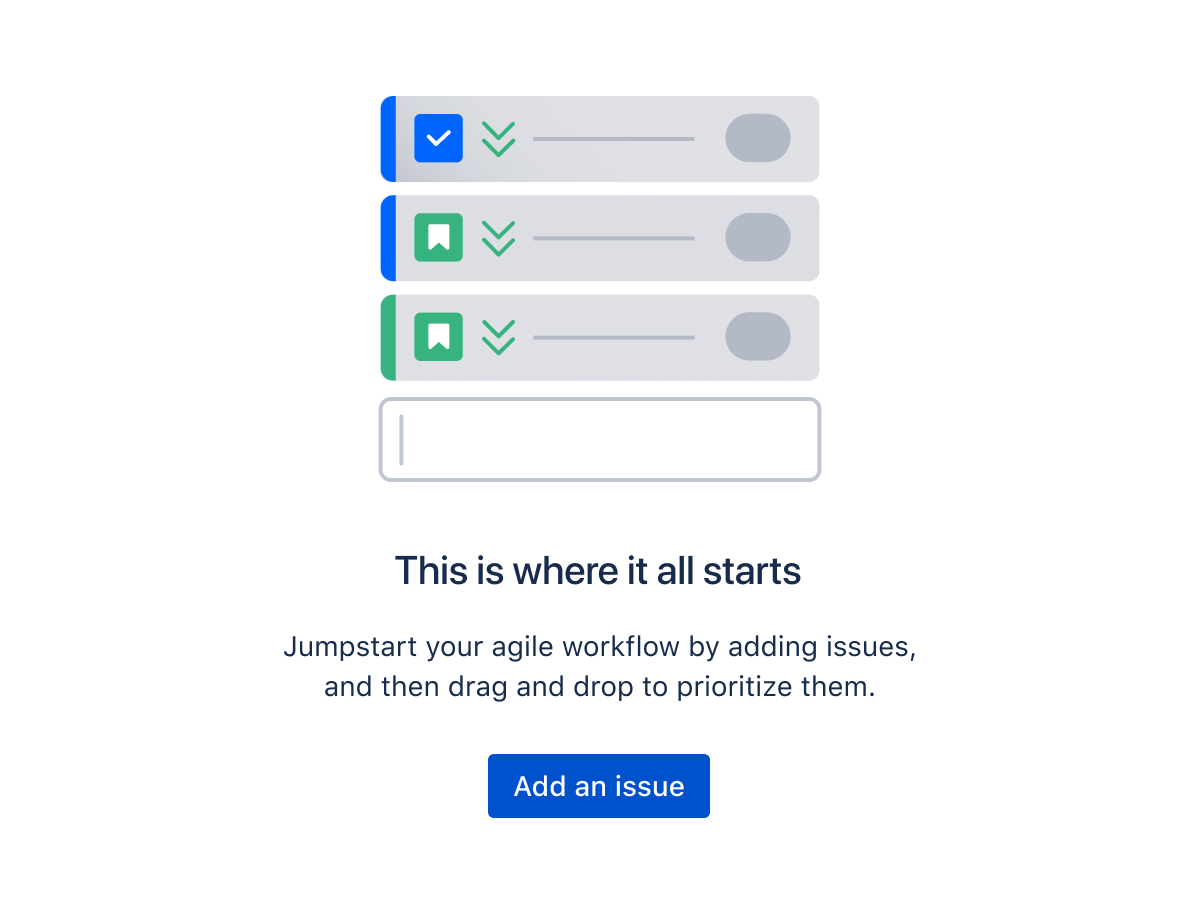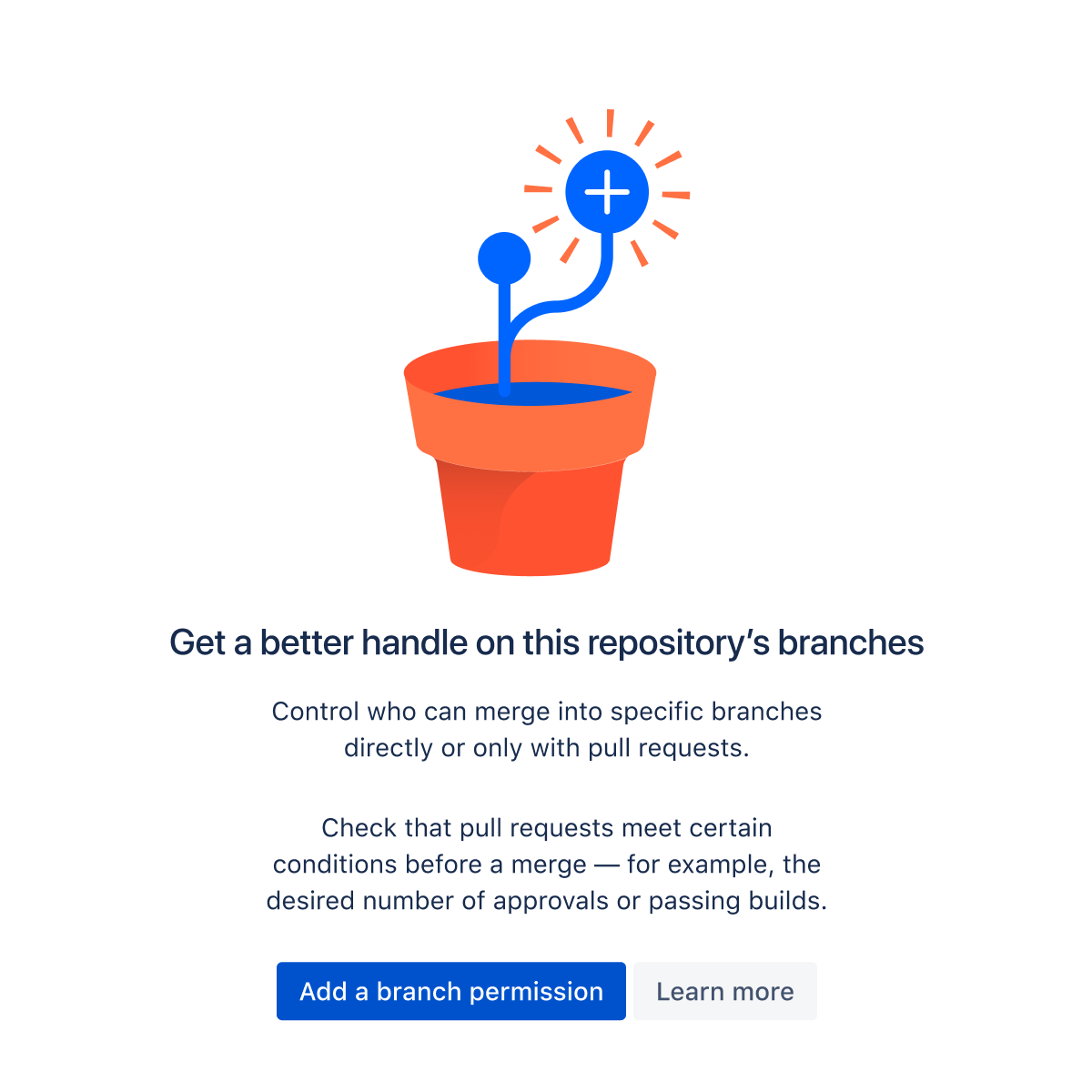These messages highlight a new or recently updated experience. Let people know what's changed, and invite them to try something new. A feature discovery message should leave your reader feeling curious, excited, and empowered.
For more guidance on this messaging type, see the new or updated feature pattern.
When introducing the new feature, consider what the user is trying to accomplish, what they were just doing, and where they need to go.
Titles and messages should clearly indicate user benefits. For example, "Find your work faster" instead of "New search".
This should be a positive experience for people, so it's okay to be delightful, just don't overdo it.
Determine if you need to inform (a feature has moved) or educate (the experience or interaction has changed). Introduce the change, communicate its benefits, and provide a call to action if appropriate
Be bold and optimistic about a new feature, especially if there are benefits and improvements for the user. Be clear and practical, and you can add a little “wink” to entice the user to try something new.
The information flag below promotes the updated search feature, giving the option of learning more or trying out the new search.

This example encourages and empowers the user to begin using Jira as intending by adding issues.

This Bitbucket example encourages people to improve their Bitbucket experience by adding branch permissions. It clearly states the benefits and ideal state of using this feature.

Was this page helpful?
We use this feedback to improve our documentation.